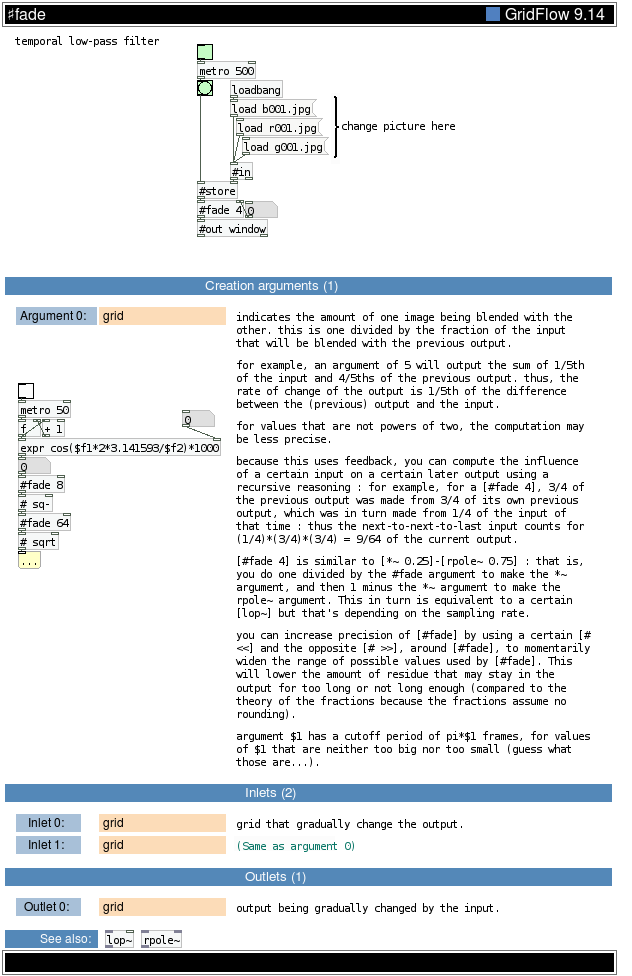
temporal low-pass filter indicates the amount of one image being blended with the other. this is one divided by the fraction of the input that will be blended with the previous output. for values that are not powers of two, the computation may be less precise. because this uses feedback, you can compute the influence of a certain input on a certain later output using a recursive reasoning : for example, for a [#fade 4], 3/4 of the previous output was made from 3/4 of its own previous output, which was in turn made from 1/4 of the input of that time : thus the next-to-next-to-last input counts for (1/4)*(3/4)*(3/4) = 9/64 of the current output. change picture here [#fade 4] is similar to [*~ 0.25]-[rpole~ 0.75] : that is, you do one divided by the #fade argument to make the *~ argument, and then 1 minus the *~ argument to make the rpole~ argument. This in turn is equivalent to a certain [lop~] but that's depending on the sampling rate. you can increase precision of [#fade] by using a certain [# <<] and the opposite [# >>], around [#fade], to momentarily widen the range of possible values used by [#fade]. This will lower the amount of residue that may stay in the output for too long or not long enough (compared to the theory of the fractions because the fractions assume no rounding). argument \$1 has a cutoff period of pi*\$1 frames, for values of \$1 that are neither too big nor too small (guess what those are...). grid that gradually change the output. output being gradually changed by the input. for example, an argument of 5 will output the sum of 1/5th of the input and 4/5ths of the previous output. thus, the rate of change of the output is 1/5th of the difference between the (previous) output and the input.